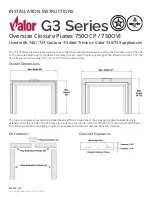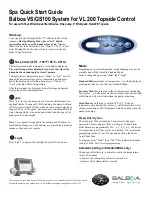
Program # 101:
Number of rings to pick up
When the PBX routes an incoming call to the unit, it may be programmed
to answer the call on either the first ring or anywhere up to the ninth ring.
Enter 101 n where n = 0 to 9 rings
If
Þ
is entered, the unit prompts the message “This entry is invalid”.
Default value = 1
Length of entry = fixed 1 digit
Note:
If 0-rings-for-pick-up has been programmed, the incoming call is
picked up immediately as soon as the port receives the first ring pulse
without waiting for the first ring to complete.
Program # 201:
To listen to the currently programmed value for the Number of rings to
pick up -
You will hear: “Two Zero One (0.6 sec silence) One”
Program # 102:
Transfer Type
To select the TRANSFER TYPE
ATT 2000 Supports 3 types of transferring an incoming call.
Type 0 - Semi supervised
Type 1 - Fully supervised
Type 2 - Blind mode
Semi supervised:
In this mode, the unit transfers the call to an extension, if
it returns a ring signal. If that extension is busy or invalid, the appropriate
message is played back to the caller.
Fully supervised:
In this mode, the unit waits for the extension to answer
before transferring the incoming call. If there is no answer from the
extension, the unit plays back the message “I am sorry, there is no answer
from that extension” and then allows the caller to dial 0 for the operator or
dial another extension or hang up. The number of rings that the unit waits
before deciding there is no answer from the called extension depends on
the value programmed under program # 111.
When a call is transferred to an extension, the ATT 2000 intelligently
analyses two consecutive call progress cycles to decide whether the called
extension is busy or invalid or if there is no answer. If the called party
answers, the call is patched through immediately.
Some PBXs return a BUSY signal when an Invalid extension is dialed. In
such cases, the unit plays back the message “I am sorry, that extension is
14
Summary of Contents for ATT 2000
Page 1: ......















































